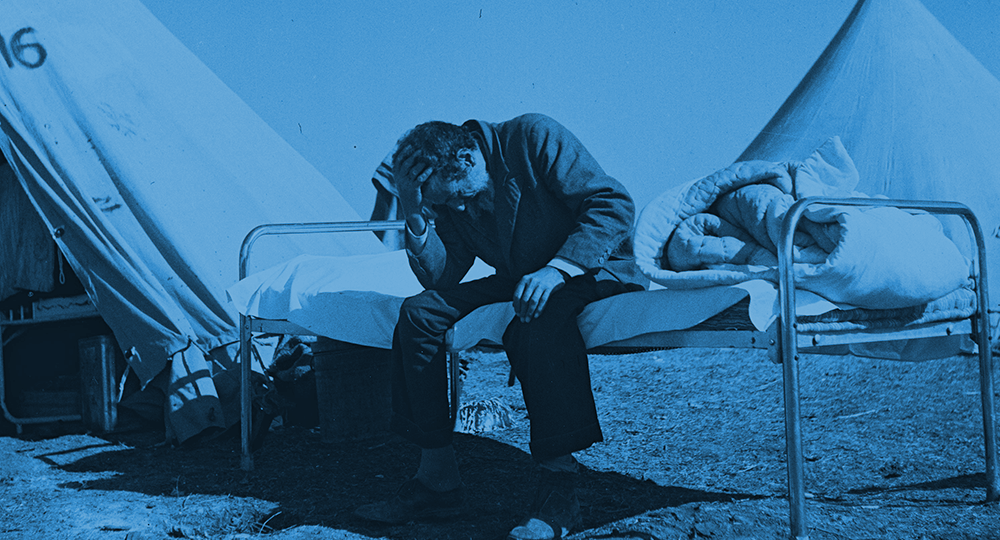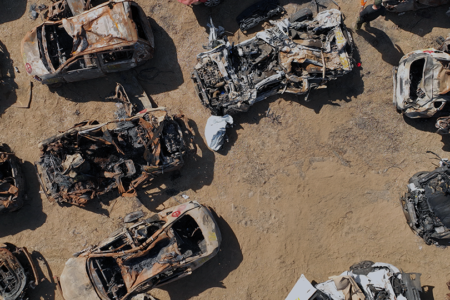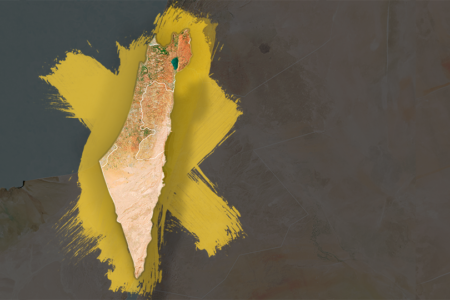The Forgotten Ones
The world talks incessantly about Arab refugees. But what about other refugees who lost everything—like the Jews?
As of June 2023, according to the United Nations (UN) High Commissioner for Refugees, the world has 108.4 million displaced people, of which 35.3 million are refugees. News reports on the Middle East often refer to the Palestinian refugees and their plight, but they never mention Jewish refugees. Is this because there have been no Jewish refugees? What is the truth about refugees in the Middle East?
Arab refugees resulted from the anticipation of war between the Arabs and Jews after the UN partitioned British Mandate Palestine into two states in 1947: One was to be Jewish; the other, Arab. The Arabs rejected the partition and tried to eliminate the Jewish presence entirely by forming a military coalition of Arab nations and attacking Israel on the morning of May 15, 1948, the day after Israel declared independence.
Even before the war broke out, some 30,000 wealthy Arabs who feared the imminent fighting fled to neighboring Arab countries. Less wealthy Arabs of mixed ethnicity moved eastward to all-Arab towns to wait out the war with relatives or friends. Both groups expected an early Arab victory and a safe return to their homes. That was not the case.
Assessing Culpability
The early exodus alarmed the Arab Higher Committee, the Arabs’ political group established in 1936 and headed by Adolf Hitler’s ally, the grand mufti of Jerusalem. The Arab Higher Committee asked neighboring Arab countries to prevent their brethren from gaining entrance.
The battle for Deir Yassin to protect the transport corridor to Jerusalem became a catalyst for the exodus. A report of a massacre fueled Arab fears of abuse and death, even though the report was inaccurate. According to eminent Israeli scholar Eliezer Tauber, the Irgun (the attacking Jewish force) killed 101 people, 61 in combat, leaving an escape corridor for more than 200 residents. The Irgun suffered four dead and 41 casualties. Allegations of rape and massacre were unsubstantiated; but the Palestine Broadcasting Service used them to provoke action from the Arab armies, not realizing how local Arabs would react.
The British, who had controlled Palestine for 30 years, were due to withdraw on May 14, 1948. They assisted Arab evacuations when Jewish forces gained control of Tiberias and Haifa in April 1948. These initial military conflicts arose because the Arabs continuously attacked the Jews, prompting the Haganah (Jewish paramilitary group) to act to protect the Jewish population. A full-scale war could not start until the British withdrew and cleared the way for the Arab coalition to invade.
At first, Jewish leaders urged Arabs to remain in the new State of Israel, as expressed in Israel’s Declaration of Independence:
We appeal—in this very midst of the onslaught launched against us now for months—to the Arab inhabitants of the State of Israel to preserve peace and participate in the upbuilding of the State on the basis of full and equal citizenship and due representation in all its provisional and permanent institutions.1
This detente would only work if the Arabs supported Israel’s existence. After the war broke out, only Arabs willing to support Israel could be permitted to stay. Consequently, Israel required some to leave; but they were a minority compared with the vast numbers who left of their own accord.
Estimates of the number of Arab refugees resulting from the War of Independence vary from 400,000 to 1 million, with the more probable number being around 600,000. In UN Resolution 194, passed on December 11, 1948, the UN told the Arab nations and Israel to handle the situation. It called for refugees to return to their homes in peace; and it supported Israel’s non-repatriation of hostile Arabs who would threaten Israel’s security and, therefore, would need resettlement in Arab states.
Israel’s response was positive. In the words of President Chaim Wiezmann, “We are anxious to help such resettlement provided that real peace is established and the Arab states do their part of the job.”2
Peace negotiations included the refugee issue, and Israel was willing to take back a significant number. The Arabs rejected such offers to avoid recognizing Israel as a legitimate entity. Consequently, the Arab nations confined a large majority of Arab refugees to camps. Jordan was the only Arab state to accept the refugees and grant them citizenship.
The other Arab states contributed nothing to resettling the refugees, whereas Israel did its part, according to a 1950 UN report. Some 27,000 Arabs in Israel claimed refugee status, for which Israel took responsibility, not requiring UN funding for their needs. Over the years, Israel has provided millions of dollars in compensation to more than 11,000 claimants and has supplied more than 20,000 acres of substitute land grants.
The current Arab refugee situation is tragic and was largely avoidable if Arab nations had helped their brethren at the beginning of their plight. Sadly, the Palestinian refugee camps in Judea and Samaria (West Bank) and Gaza now hold more than 2 million people; few, if any, are the original refugees. These camps are largely maintained as a symbol of so-called Israeli oppression and provide personnel for terrorist factions.
The Jewish Situation
The Arabs, however, were not the only refugees associated with Israel’s War of Independence.
First, Arab attacks on Jewish villages produced 60,000 to 70,000 Jewish refugees in the land itself. Unlike the Arabs, who could flee beyond Israel’s borders, Jewish people had limited options. They remained within Israel, some taking refuge in immigrant and refugee absorption camps called ma’abarot in Hebrew.
Second, many Jews were forced to flee from Arab countries where they had lived for generations. Most left with only the clothes on their backs. Estimates place the number of Jewish refugees at 850,000.3
Targeted and violent persecution in Algeria, Egypt, Iraq, Libya, Morocco, Syria, and Yemen forced Jewish people from their longstanding homes. But these refugees had no interest in returning. More than half a million settled in Israel at the fledgling Israeli government’s expense, without any compensation from their Arab homelands. Several hundred thousand found refuge in Europe and the United States.
Their property, confiscated by Arab governments, exceeded that lost by Palestinian refugees; and they never received any compensation.
UN resolutions regularly focus on the plight of the Arabs, but not one has focused on the plight of the Jews. This is remarkable, considering the reality of the Jewish people’s initial circumstances. These refugees have been largely forgotten.
The good news is that the Jewish people did not remain refugees in Israel or in any of the other countries to which they fled. Despite the cost and challenges associated with resettlement, Israel worked to incorporate the refugees into the newly formed state. Citizens, not refugees, helped Israel build a modern nation.
Each November 30 since 2015, Israel remembers and honors the Jewish refugees who were expelled from their homes in Arab countries. Nearly half of Israel’s population is descended from these people.
The UN and news media paint inaccurate pictures of what happened in 1948, as well as what is happening today. We should remember that every story, including the refugee story, has two sides; and we should not be swayed by one-sided versions.
ENDNOTES
-
-
-
- “The Declaration of Independence,” Israel State Archives (tinyurl.com/Israel-Aar).
- Mitchell Bard, “The Palestinian Refugees: History & Overview,” Jewish Virtual Library (tinyurl.com/BardM-1).
- Estimates based on UN document “Trends and Characteristics of International Migration since 1950—Refugee Movements and Population Transfers” (UN Department for Economic and Social Affairs, Demographic Study No. 64 ST/ESA/Ser. A/64), cited in “Jewish Refugees From Arab Countries,” Justice for Jews in Arab Countries (justiceforjews.com/refu_3.html).
Photo: GPO Press Office
-
-








